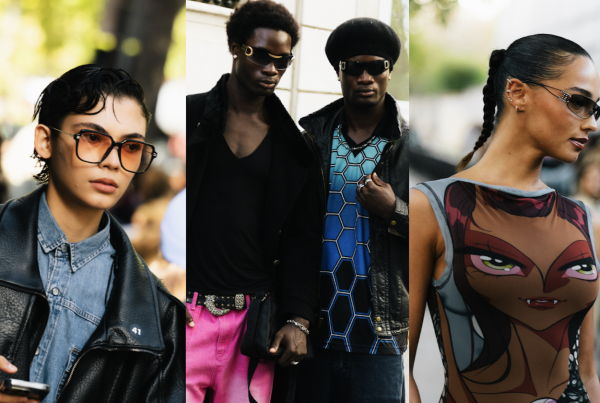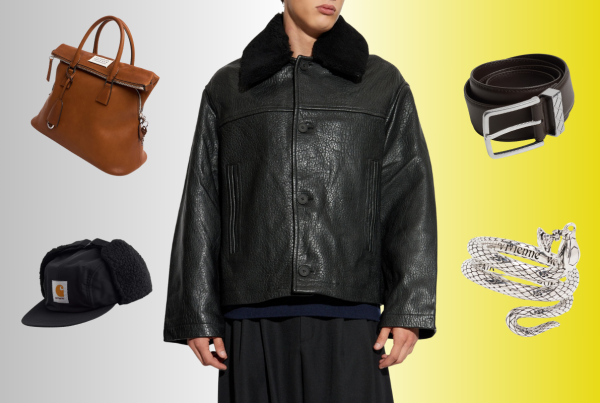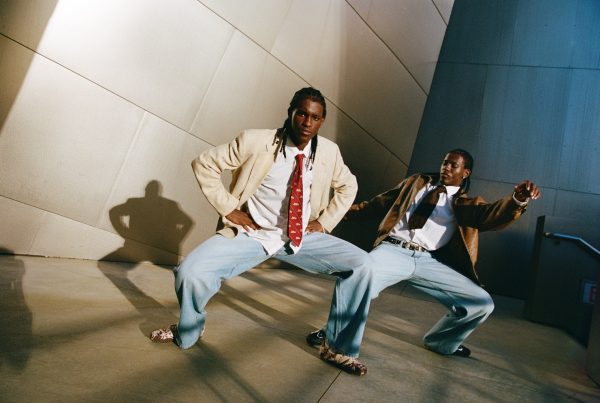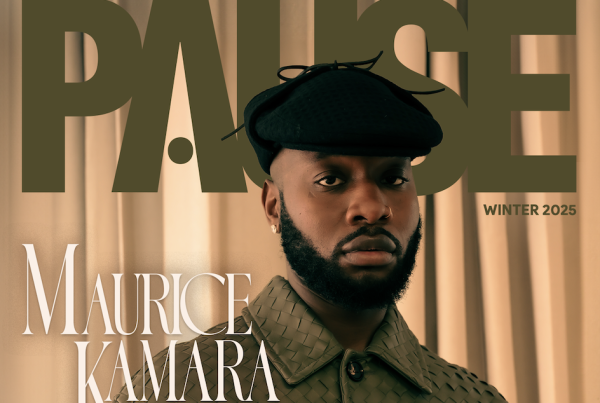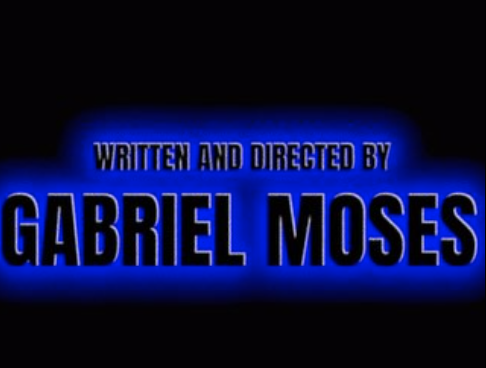A Long Time in the Making.
Cast your mind back to 1985, set amidst the bustle of Andy Warhol’s reign of supremacy in the art sphere… what do you see? Vibrant pop art crossed with the ever controversial side of “business art”? Definitely. A plethora of Warhol’s divisive television commercials? Absolutely. What you won’t be seeing was Andy Warhol’s Absolut “Blue” painting, which mysteriously vanished and only re-emerged at auction back in 2020. With Warhol’s sister painting having taken the limelight over this 35-year time period, it was about time that its “Blue” partner was shown some love. Enter, Absolut Vodka.

PHOTO CREDIT: Absolut/Spritmuseum
Absolut’s rich cultural history speaks for itself, but this latest venture rubber stamped the Sweden-born brand as a curator and a mainstay of the creative scene. Boasting over 800 collaborative artworks based on the unique Absolut bottle silhouette throughout the years, there’s no doubt that the brand’s synonymous bottle has been a blueprint for creatives across a range of industries. From teaming up with fashion icons such as Versace, Tom Ford, Jean Paul Gaultier, and sacai to ruling over the advertising game with their striking, yet simplistic “Absolut X” visuals, Absolut had the edge. Take one of their most notable escapades, which saw French-born liquor icon and Absolut account manager demand that Absolut be connected to all forms of culture in consumer minds, and so in 1988 he commissioned fashion designer David Cameron to put together an Absolut dress, which was eventually modelled by Rachel Williams in an ad. In turn, Absolut were flooded with phone calls from the public enquiring over the availability of the piece. A mere three years later, another Absolut dress was donned by the one-and-only Candace Bushnell – who was the bestselling author and creator of Sex & The City (1988) – causing another frenzy. The dress, which was designed by Anthony Ferrara, was composed entirely of 18K gold and had a USD 530,000 price tag. What was made abundantly clear at this point in time was that Absolut saw the importance of cultural scenes and intertwining themselves with them, separating themselves from the traditional business model, one that saw value predominantly in monetary gain.
Winding back the years for this 2024 collaboration, Absolut’s first-ever collaborative advertisement alongside American art icon Andy Warhol is brought back to life. Featuring blue brushstrokes that bring Warhol’s signature painting to life, the striking bottle matches up with Absolut’s bold blue lettering, with the central art piece being magnified by the Absolut Vodka liquid. Underling that attention to detail, every splash of colour is extracted directly from the original painting, being made with multi-layer screen printing in order to replicate that intimate hand-painted feeling.
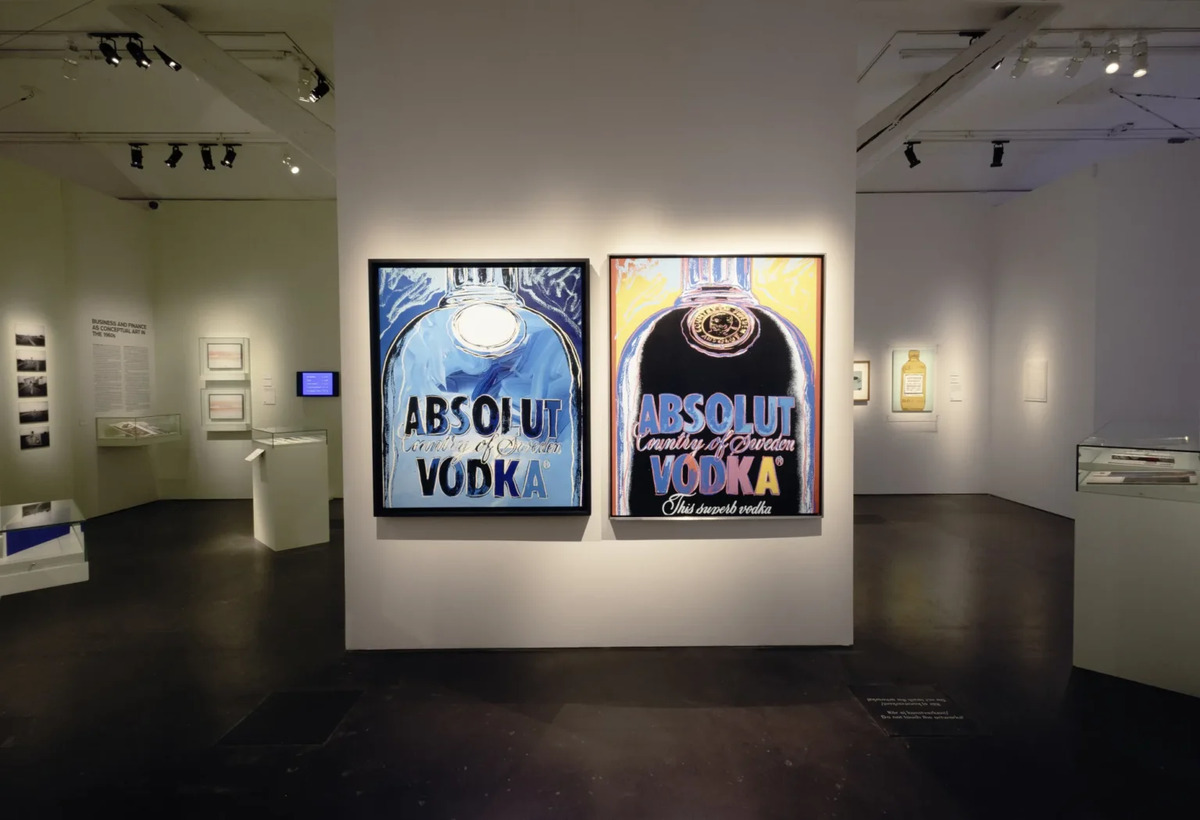
Heading to the Spritmuseum in Stockholm, Sweden to get check out the grand opening of the new Andy Warhol exhibition, titled ‘Money on the Wall’, PAUSE got the run down on what was what, sitting down alongside Michael Dayton Hermann – the Director of Licensing for the Andy Warhol Foundation – to get an inside perspective of business art, the “Absolut Warhol” collaboration, and the future of digital art.

In 1975, the late great Andy Warhol once said:
“I like money on the wall. Say you were going to buy a $200,000 painting. I think you should take that money, tie it up, and hang it on the wall.”
Setting a pretty perfect precedent for the Spritmuseum’s “Money on the Wall: Andy Warhol” exhibition, renowned art critic and Warhol expert Blake Gopnik honed in the iconic artist’s affection for what he called “Business Art,” otherwise known as “the step that comes after art.”
PAUSE visited the opening of the exhibition in Stockholm last month, with the all-new display embracing Warhol’s philosophy of “selling out.” From the very beginning of his journey as an artist, Warhol obsessed over the role that consumer culture and the wider capitalist landscape played in the world of art at that time, with the American dollar bill being one of his most frequently utilised motifs. By the late 1960s, Warhol had helped form a new form of artistic expression, one that welcomed business and finance in the form of art.
Moving through the airy space in Sweden’s capital city, Spritmuseum’s “Money on the Wall: Andy Warhol” starts with an engaging section on Warhol’s work as a commercial artist in the 1950s, celebrating his early beginnings whilst setting the scene of the burgeoning advertising industry, one that would have a profound effect on the rest of his career. As you might expect, the central area of the exhibition is inhabited by classic Pop Art pieces, ranging from Warhol’s iconic – and highly lucrative – portraits to the star of the show: Absolut “Blue” (and its other half.) Continuing to touch on themes of economics, commerce, and commodification, lesser-known TV projects from Warhol add a different 3D dimension to the exhibition, underlining the New York-born artist’s multifaceted artistic nature. A distinct high point is “Soap Opera,” which sees early Warhol work consisting of genuine TV commercials display in tandem with improvised scenes from his entourage. The jack of all trades creative features in a plethora of his own work, becoming an advertising model, fashion model, film maker and restaurateur for product advertisements that sell everything from laxatives and ice cream to Brillo soap pads.
Championing the next generation of artists in the field, the exhibition also displays the legacy of Warhol’s work through several contemporary artists engaging with similar themes, including Darren Bader, Andrea Fraser, Takashi Murakami, Carey Young, and the controversial American art collective MSCHF.
Check out PAUSE’s interview with Michael Dayton Hermann – the Director of Licensing for the Andy Warhol Foundation – below:
Andy Warhol’s associations with fashion are endless, more than I even knew. In terms of your role as the Director of Licensing for the Andy Warhol Foundation, what does that look like on a day-to-day basis?
So I actually have a large portfolio of responsibilities, which include licensing, marketing, and sales. In terms of licensing, the Foundation acquired all of the assets from the estate, which include the intellectual property, the works of art, a variety of trademarks, and so how those get used in the world is something that I play a substantial role in and work very closely to making sure that we’re diligent stewards of Warhol’s legacy and work with the right people for the right reasons.
Yeah! We are in a world – particularly post-pandemic – where people feel like they need a little bit more brand power. What is it about Andy Warhol that is so alluring to potential collaborators? And what do you think is a red flag when you’re trying to collaborate with someone and they’re not necessarily aligning with what he represented?
Yeah, I think good collaborations, it’s about community. It’s really about coming together with people who share interests and want to pursue something in a way that’s meaningful. Warhol’s factory is known for bringing people together. It was a place where people from all walks of life could come and see one another’s company, whether you were a socialite or you’re wealthy, whether you were a drug user or you’re a prostitute, people from all walks of life came together. Warhol said they weren’t so much coming to the factory to see him as they were coming to see each other. This idea of inclusion is something that is really key to Warhol and the life that he lived. I think collaborations, when they work really well, are about that sense of community and shared values.
Where they don’t work well is when people are trying to just take someone else’s value and hold it as their own. I think there is a tendency in some cases to do that and you can see an oversaturation of things. So, we try to be as authentic and value- driven as possible when we’re approaching collaborations and that comes from taking inspiration from Warhol’s life.
Yeah, definitely. I mean, particularly in the world of fashion, it’s rife right now. Collaboration, but also kind of disingenuous collaboration, where they don’t really meet in the middle or there’s simply a name put on it.
With Warhol, I feel like I’m exposed to him everywhere I go. I remember in my university town, his art was plastered all over this wall… he’s played a bigger part in my life than I realised. In terms of the exhibit, it looked fantastic. What was your role in helping put that together? Tell us a little bit more about it.
Yeah, the exhibition was done by the Spirit Museum and they worked with Blake Gopnik as an outside curator. They borrowed works from the Warhol Museum in Pittsburgh and from various other places, so we were mostly passive in our role in that exhibition. But, we were just delighted to see new ways of talking about Warhol and new lenses for his work. I thought it was really smartly done and was happy for Blake to see his first exhibition be something so ambitious. And I didn’t know that it was going to include so many other artists as well! So that was really exciting for me to see too.
Yeah, definitely. I like that side of it, because it had a certain touch of his timelessness, I suppose, because of what came after him. I liked how obviously you’re stepping through that as you come through the exhibition, you know, so you’re going towards them in time, which is really great.
In relation to the future, I know you’ve had NFT involvement with Andy Warhol in the past. In terms of bridging the gap between business and art, which is something that Andy Warhol obviously championed and critiqued at times, what does the future hold for that area of visual art? Is its cultural position shifting along with a more digitalised environment? Or do you still view them as partly separated?
I think we still always use that lens of stewardship. And when it comes to NFTs, our interest was to look at what Warhol did in terms of digital art. So, he created digital art. He was very interested in new technologies and always kept himself informed about what was going on. He was hired by Commodore to create artwork as part of one of their press events. And these things existed in the world. So, he already made digital art. The only thing that the NFT allowed was for a way for ownership to be conveyed. We leveraged that technology so that these works of art that Warhol created could now be owned. That was how we approached it. We don’t try to get involved in things that are entirely incongruous with Warhol’s legacy or don’t make sense.
After we did that sale of the NFTs, there was a number of artists who came and asked me what I thought and how they can get to the space. And I would often pull the conversation back and ask them, “are you making digital works? And is that relevant to your practice? And if so, how? Because if you’re not making digital works and it’s not relevant to your practice, you don’t need to use this technology.” It’s just one other medium. Artists don’t always use all mediums available. They usually focus on something that makes sense for them. But for Warhol, he was always using a variety of medium from film to video to digital art, even the Warhol diaries. It was documenting things in a way decades before the world we live in now, where we’re documenting everything. So, he was always ahead of his curve and in many ways thinking about the world decades ago as we’re thinking about it now.
Yeah, exactly. That’s why I was touching on the disingenuous nature of it, because I do understand an eagerness to embrace all new elements of technology and things like that, but when it doesn’t make sense, as a consumer now, people are becoming a little bit more aware of it. Things are so oversaturated that you can differentiate between what’s real and what’s not, or what feels authentic and what isn’t.


Discussing yourself as an artist and your position, do you feel a positive sense of responsibility overseeing Andy Warhol’s legacy?
I do see it as a significant responsibility. Some people see artists who work with brands and think of it as a form of selling out to the masses of sorts, but I see it as an opportunity to engage with a new audience. So, as long as it makes sense with what an artist’s endeavour is about, and Warhol separating the boundary between art and commerce, it makes absolute sense. But when you think about the responsibility of t- shirts at Uniqlo, for example, more people are going to engage with t-shirts at Uniqlo than we’ll see Warhol artwork in museums and galleries. I recognise that through a very personal lens, where the first place I engaged with contemporary art was on a Swatch watch that was designed by Keith Haring. When I think about the responsibility I have, I put myself in my 15-year-old shoes and remind myself that this might be somebody’s first time being exposed to Warhol. So, that really focuses the responsibility that we have to make sure that we do the right projects for the right reasons.
I imagine it feels quite refreshing and feels like a blank canvas every time, because you know you’re introducing someone to something for the first time. Even for me today, to be honest, I didn’t realise quite how rich the history of Andy Warhol was.
Well, just so you know, I’ve worked at the Foundation for quite some time and I’m still learning about Warhol, so there’s a lot to learn. But that’s also beautiful because I’ve been there for a considerable amount of time. There’s still more to come.
Touching on the Absolut “Blue” painting, as an “everyman,” he introduced a new element to high art where stigmas about who could view it – and not view it – were broken down. With this piece, what does it signify to you?
I think Warhol is able to allow us to see things from fresh and different perspectives. So, Absolut had this iconic bottle in the 1980s that is proven now to be timeless as a design. But Warhol’s techniques and approach, it’s not just the colours or the silkscreen technique, it’s his aesthetics, they’re able to allow you to see something like that Absolut label as an icon of our society. And the brands change and evolve over time. But at that point in the 1980s, it was really just such an iconic brand. It still is today. And I think what he’s talking about is the relationship our society has with these iconic brands; it isn’t just about a pretty picture of a bottle. It’s really about consumer culture and how these icons become part of our society and cultural fabric.

Yeah, 100%. I mean, going through the exhibit, I saw his tongue-in-cheek approach to engaging in capitalism and consumerism, but also critiquing it in the very same breath, which I think is what creates a conversation around a piece of art.
He’s also referred to as a mirror. And I think that’s what I’m hearing you say, to some degree, is that it allows you to see that reflection and come to your own conclusions. He’s not telling you capitalism is good or bad. He’s saying capitalism is, and this is what it is. And then you have to reflect and think about your relationship to it.
What does the future of business art look like to you? Obviously what we saw in the exhibit today was that his legacy has lived on, but do you see it continuing in the same vein?
I think that contemporary art has grown in popularity and the market has grown. And so in terms of arts and its relationship with money, it’s more complicated now than ever, and more complex and more relevant now than ever. So, I see that artists will continue to investigate that territory. MSCHF is in the show and I think they’re certainly tapping into this in new and interesting ways, using models that you couldn’t have used 30 to 40 years ago. So, I think that the concept is right for people to continue to investigate and I expect they’ll do it in fresh and interesting ways.
Even Klaus, frankly, I think is somebody, and what I would say about MSCHF and KAWS, which a lot of people don’t recognise, is that both of them came to art through commerce. And that’s true for Warhol too. He’s a commercial artist. Most artists, you think about Jeff Koons or Murakami, Damon Hirst, they start as artists and then they go into other commercial areas; their world gets bigger.
The Andy Warhol ‘Money on the Wall’ exhibition can be visited from now until April 27th, and the limited-edition Absolut x Andy Warhol vodka bottle is available to buy now.









